October 7, 2009

hand-carved…we should all use our hands more, leave our marks on stones.
The autumn equinox has already radically changed the shape of the light here at the Cemetery, and the drying of the leaves reveals more limb of tree – and that loss of leaf in turn brings out new stones, revealed from the shadows.
A lot of the graves at the Old City Cemetery were dug when the adjacent trees were small sprouts, and one or two hundred years later, the tombstones are quite hidden throughout the gnatty humid summer as the shadows tuck them into cool dark recesses of leaf and spiderweb.
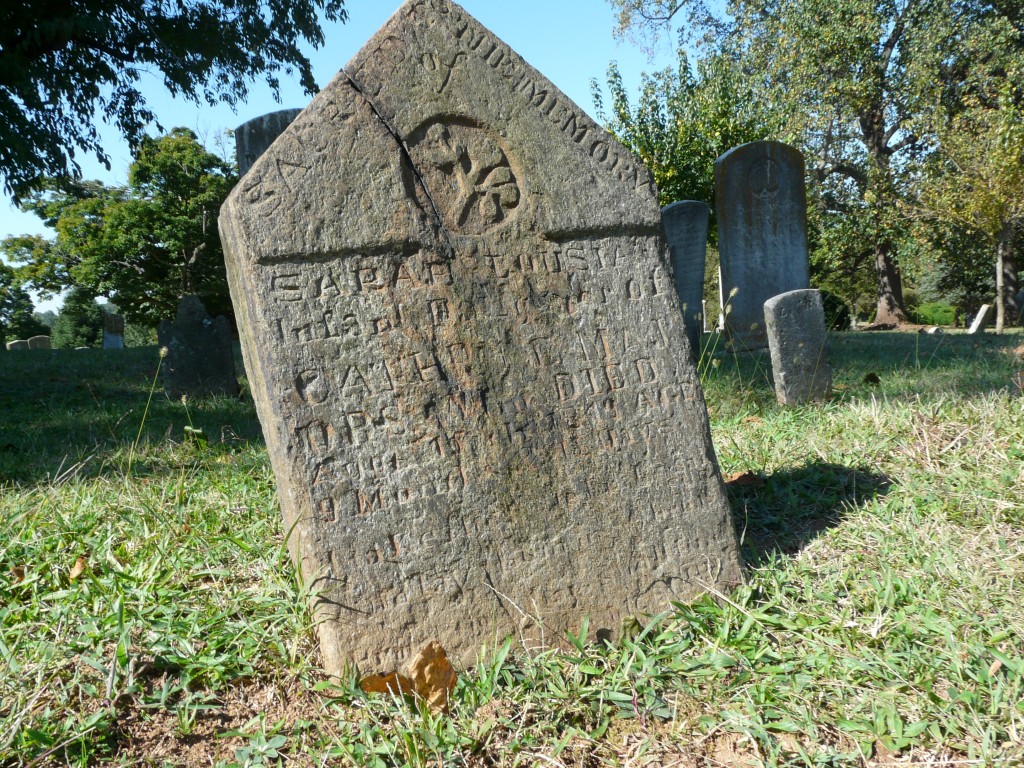
tilted in many directions, as the shadow stretches to the side.
Now, as winter approaches, the dapples widen into generous swaths of sunlight. For the stones, this means their lichens and mosses are inexorably brought forth – coaxed, carried, thrust – into the wan but insistent heat and light.
How beautiful that just as the light diminishes for the rest of us, it actually grows longer, richer, brighter and more determined for graves that lie beneath trees. Like the southern hemisphere, our winter becomes their summer.
I have been arriving at about nine or ten in the morning, and circling and spiraling a pathway from stone to stone, concluding my circumnavigation as the sun sets near six in the evening. Over the weeks, this has provided a sense of relationship hitherto unknown to me – words carved on slate suddenly materialize at a certain hour, only to vanish moments afterwards.
The stones themselves are multicolored – unlike granite, the fieldstone, limestone, and slate of these markers age with breathtaking complexity of hue. And since the stones are hand-chipped rather than machine-cut or mechanically chiseled, the edges become a heavenly habitat for all manner of tiny beast.
Little insects warm themselves in the hollows of the carvings, and within the tufts and buckets of the lichen growths. As the day progresses, I return to visit the wee creatures and watch them migrate around the stone foliage, either avoiding or seeking the sun.
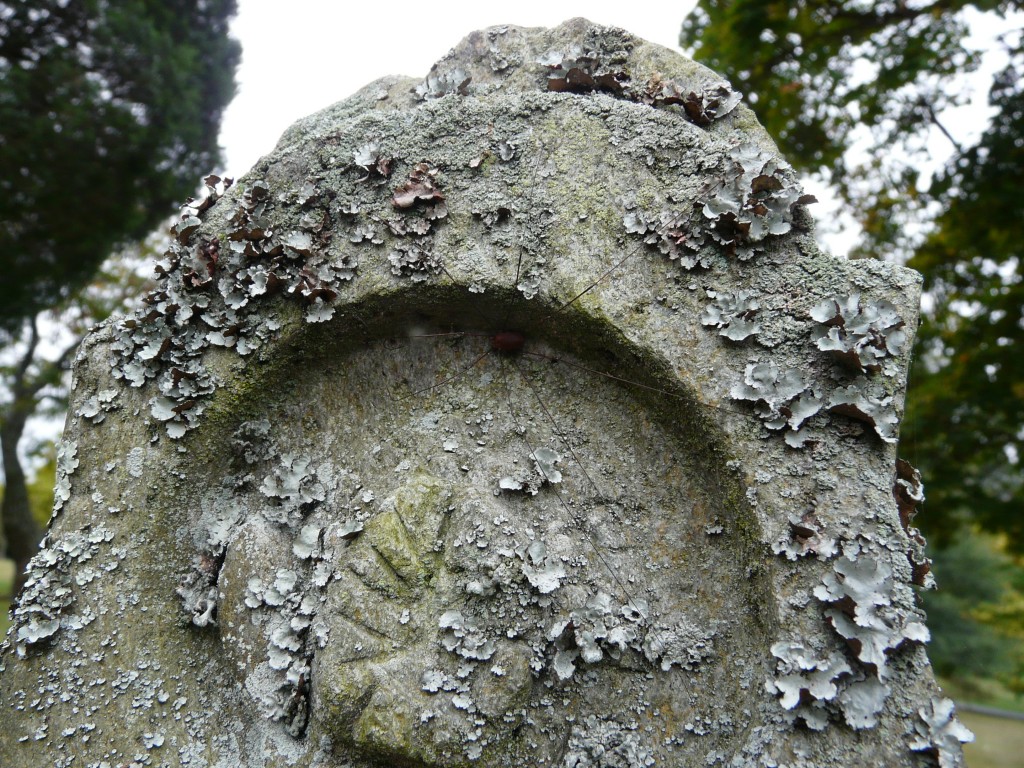
the beautiful little spider tucked up with its body in the shade, and its toes in the sunshine.
I’ve been working almost exclusively in the oldest section of the Cemetery, which means the first burials were of enslaved Africans in the early 1800s. As I’ve mentioned before, there are about 20,000 burials at the Cemetery, seventy-five percent of which are African-American, eighty percent are female, and forty percent are children under the age of eight.
Many of the stones are long gone, or were simply large field stones that have long since moved elsewhere. Many families are buried together, but the mother – having purchased headstones for all her babies – has no stone because there was no money left to have one carved by the time she died. Some of these families are the children of prostitutes who lived and worked in the brothels that surrounded the cemetery – those women often outlived all their children. Without descendants, there was nobody to secure a headstone. Lest one be tempted to generalize, other prominent prostitutes had quite lavish plots paid for by their clients, or through their own substantial profits.
The family plots of mothers and babies are identifiable because there will be a number of small depressions in the soil surrounding one large depression. But other families all have stones, and are grouped together in a cluster.

the graves sink when the wooden coffin recycles itself and its contents.
The carvings are exquisite, invisible – vaporized by the elements, or carved with such fierce determination that their longevity is assured far longer than yours or mine. Some have an initial at most. Others are gorgeously carved of slate or limestone – some have very simple crowded text of a few words slipped into a small stone, etched nearly an inch deep. The handwritings are distinctive, and leave hope that all will not be lost to digital typesetting when there is still the human hand with the desire to leave a mark, an analog mark whose passion pays no heed to tracery.
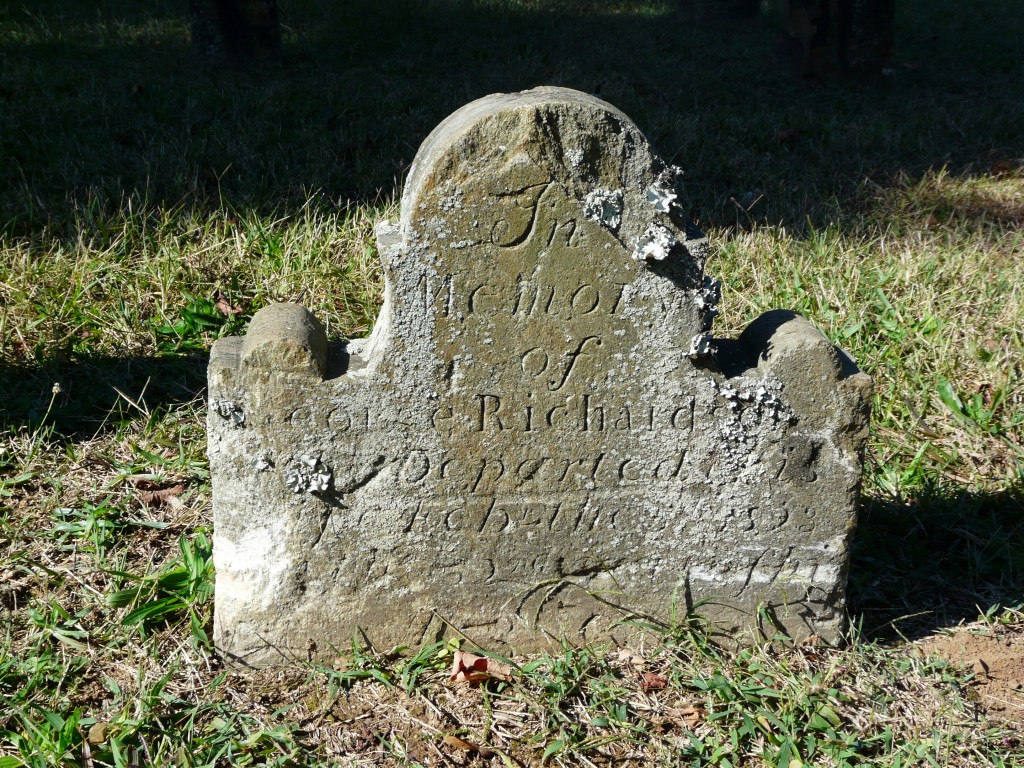
a beautiful stone, about eighteen inches high.
The Cemetery trees have become more powerfully present as their leaves thin – because my eye seeks out lines, perhaps – perhaps because branches look like handwriting against the sky. Like dry point. Inked in. Their lines include buckeyes, black walnut, chestnut, and my absolutely dearly beloved Catalpa Bean Tree with its thin dangling fingers, dawdling in the empty air.
And their shade is tremendously lush due to the large leaves and heavy branches. But as we find ourselves here in October, each day finds our friends the trees more bare-branched, with new patterns on the soil below. Mixing with the shadows of grasses, and the words of some human language carved into a rock above some bones. Bones also made of lines.
Bones without flesh are as trees without leaves. More gorgeous, perhaps, for how their structure is vulnerably revealed.
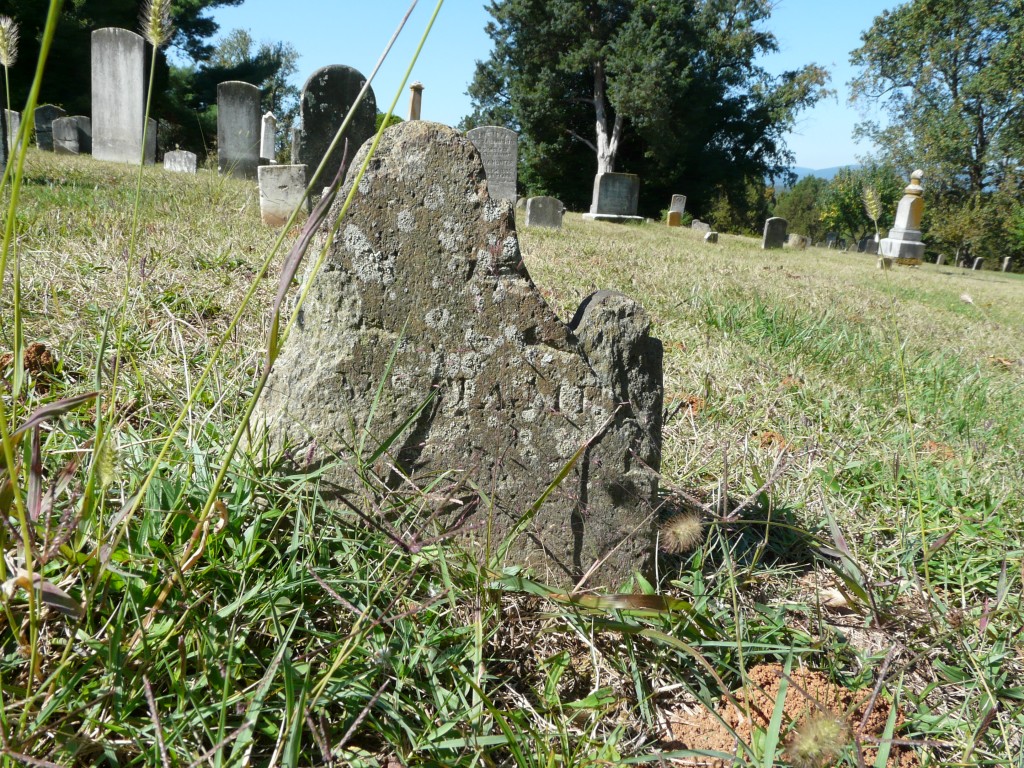
lichens suddenly seeing the sun for the first time in months.
The sun is also moving laterally in different ways than it did this summer – an insistent autumnal geometry of angle. In photographing gravestones, geometry is actually quite complex. Not only are there the limitless angles of the stones (leaning fore and aft, and tilted in all directions), there are also heights and breadths of stone that affect how the shadows are cast. And of course the carvings, which reveal themselves in different ways according to all those variables.
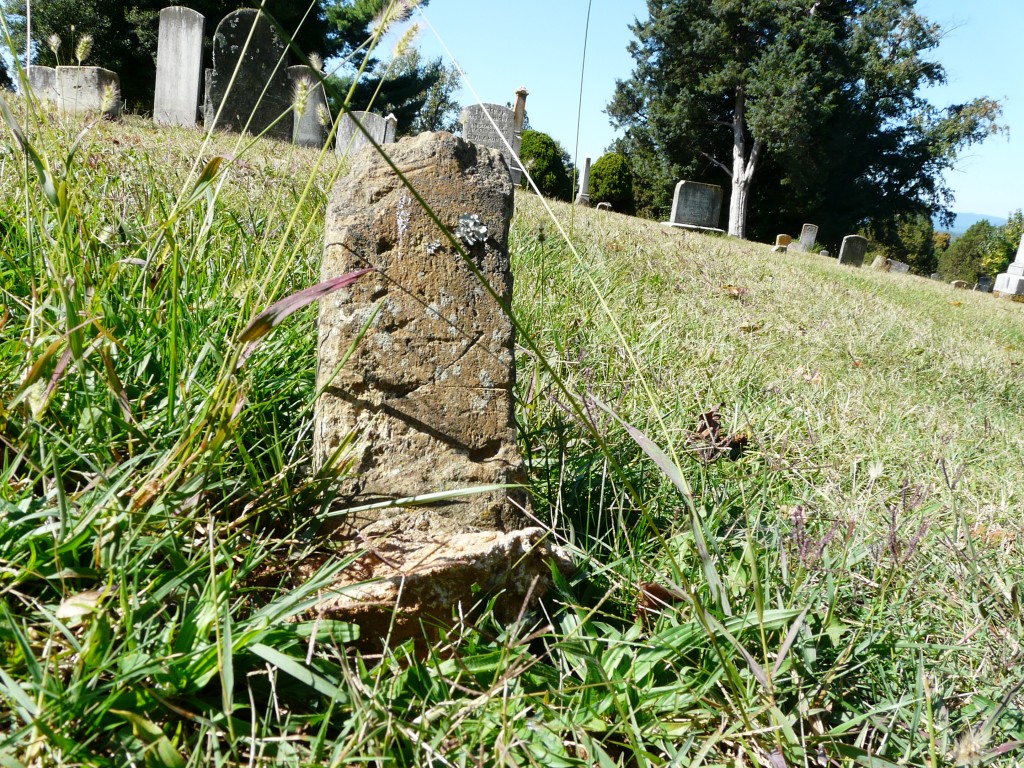
this child’s stone is about four inches by ten inches. Even the lichens are babies.
And then of course there is the geometry of the graves themselves, which in most cemeteries are in an orderly grid – at the Old City Cemetery, they are haphazard and chaotic, angled this way and that. Since one-fourth of the graves are children, many are clustered together companionably rather than in the more austere militaristic manner of adult burials.

a child’s raw-carved stone – tilted, with lichens and spiders amidst the grasses. In the background, foliage shows that winter is coming at different rates depending upon species.
As my NEA Fellowship at the Virginia Center for the Creative Arts draws to a close this week, much clickity clackity and chittery chattery has been taking place down at the Old City Cemetery. There has been much plotting and planning and strategizing at the Cemetery, as we sort out the hopeful possibilities for setting up a two-year Artist-in-Residency for me. Keeping all the bones crossed in anticipation of a fruitful discussion tomorrow… The goal is to return four to six times per year to create a series of ongoing creative projects there, both in terms of African-American history pursuits, and in terms of more abstract artistic endeavors.
More updates will follow on this project, which would be spectacularly splendid if it comes to pass.
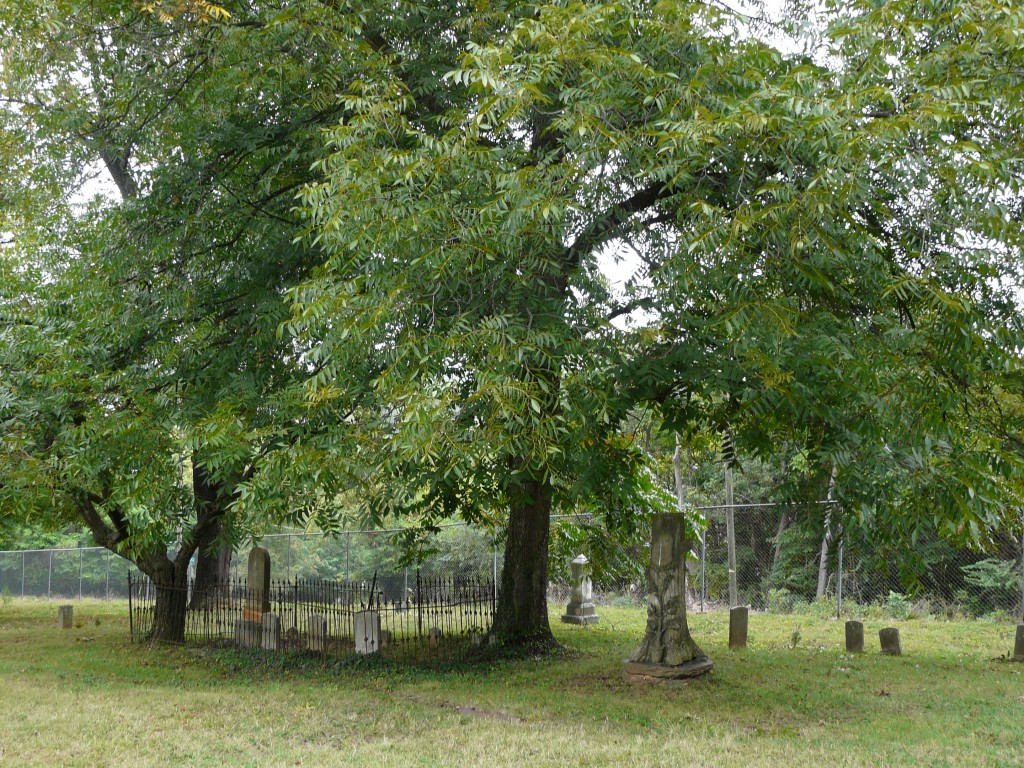
the graves and stones enjoying the remaining shade before the sun moves through the branches unimpeded by leaves.
As for the snapshots on this post – I’m working with my old film cameras more or less exclusively, so there are relatively few “digital companion snapshots” available at this point – the digital Lumix is sweet and true, but doesn’t have the same aged grace as my film cameras. I have perhaps fifty or sixty rolls now safely back in Los Angeles, to be dropped off at the lab tomorrow. More fingerbones are crossed that images will appear happily on those negatives.
Given the vicissitudes of my lenses and other mechanical bits, I’m making impressions of the cemetery more than records – the scripts will not be legible, little will be in focus, and perhaps nothing recognizable as cemeterial will even materialize. And so that’s why these snapshots are particularly surprising to see when I download the memory card – despite the hundreds of hours I have spent there in the past six weeks, the cemetery still exists in internal abstraction, and in emotional intimacy.
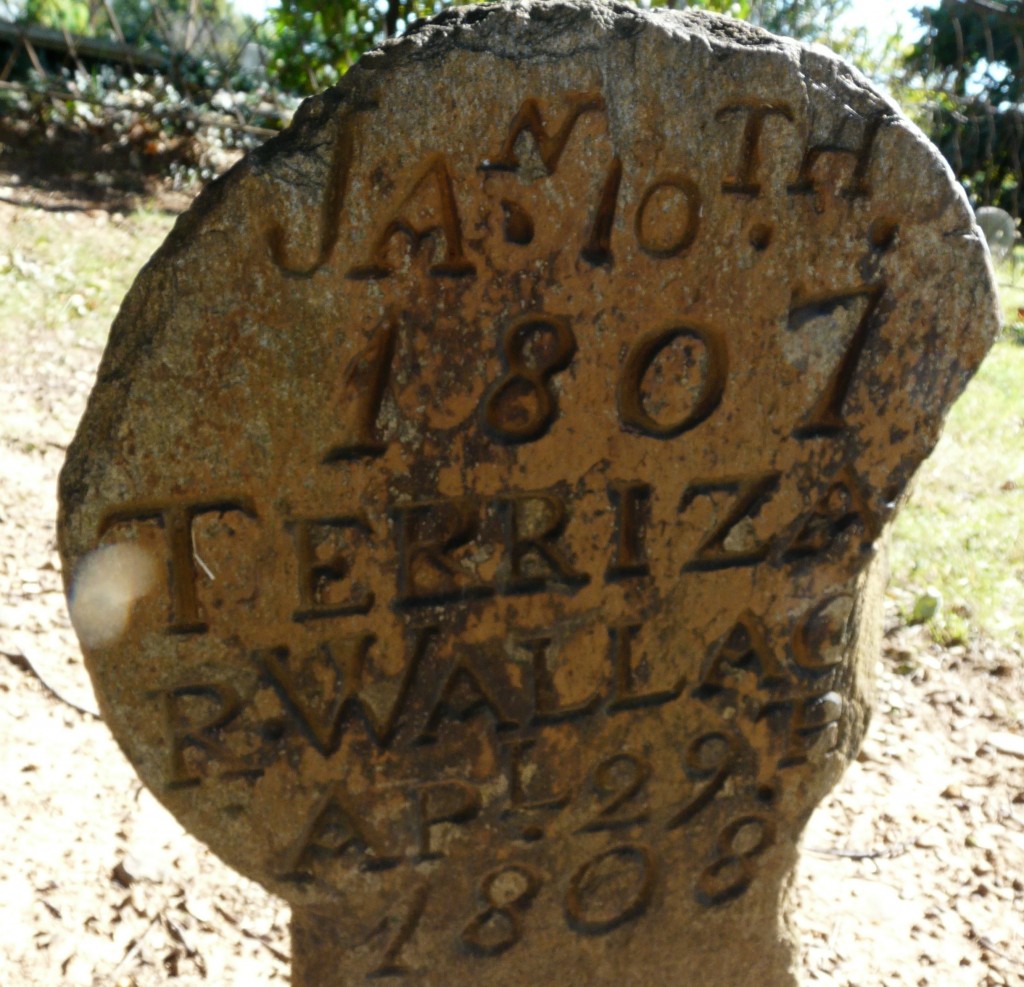
my favorite stone in the cemetery belongs to Terriza, a baby born into slavery who survived for only a little more than a year. It is rough-hewn with a certain ferocity of memorial. One of the oldest stones in the Cemetery, but the most legible after two hundred years.
Here is a map and biographies of a few of the people buried here. The website is very good reading.

the haphazard grouping looks more like an impromptu family reunion than the antiseptic grid of modern burials.

Oh, I am wishing you luck (and crossing my bones) for that two-year extension!
Yes, indeed. Bones crossed!
“How beautiful that just as the light diminishes for the rest of us, it actually grows longer, richer, brighter and more determined for graves that lie beneath trees. Like the southern hemisphere, our winter becomes their summer.”
“Bones without flesh are as trees without leaves. More gorgeous, perhaps, for how their structure is vulnerably revealed.”
such lovely thoughts. amen.